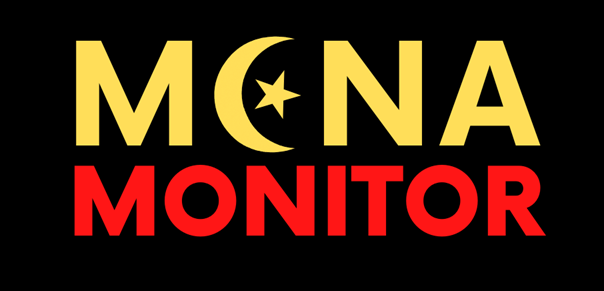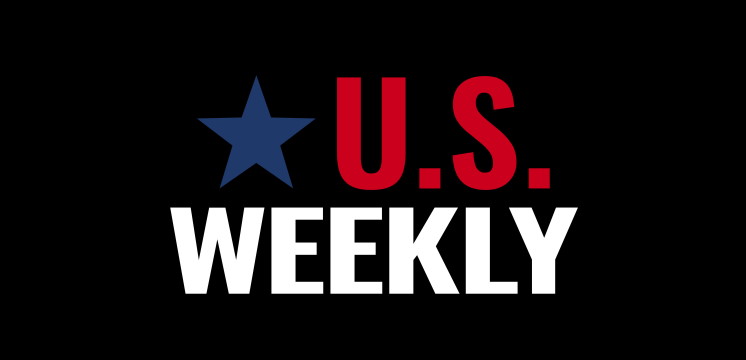Date: 15 March 2024 Author: Natálie Vaidišová
Disinformation Narratives in Czech Republic: Domestic Overview
Disinformation narratives in Czech Republic within last months are strongly influenced by the development of recent events. In the following text, I am examining the milestones for the latest development of disinformation narratives: the mass shooting at the Faculty of Arts in December 2023, Czech government’s approach towards combatting disinformation and farmers’ protest in February 2024.

Mass shooting at the Faculty of Arts
The shooting at the Faculty of Arts of Charles University towards the end of 2023 became the most recent example of disinformers’ cynicism.
In the afternoon of December 21, 2023, a postgraduate history student began a mass shooting, killing 14 people. 25 people were injured. After being engaged by the police, the 24-year-old perpetrator committed suicide. The same perpetrator was later confirmed to have committed a double-murder in Klánovice, around 25 km from the center of Prague. The attack was the deadliest mass murder in the history of the independent Czech Republic since 1993.
Particularly strong emotions, chaos and lack of information during and immediately after the attack provided a ground for disinformers to engage with this topic and use it to undermine the Czech government and police. According to an expert from a disinformation monitoring project, Filip Trhlík, disinformation started spreading right after the attack, nourishing conspiracy theories that aimed to substitute for lacking reliable information. However, Trhlík pointed out that the good quality of communication from the police’s side helped to prevent further spread of certain disinformation narratives and conspiracies. An example of such a conspiracy theory was an allegation made by Czech disinformer Aleš Svoboda, who claimed that the perpetrator was Ukrainian. However, this conspiracy attracted little attention, even from disinformation outlets, and was discarded before gaining any real traction.
An important factor that enabled most disinformation was the fact that six days passed between the Klánovice murder and the mass shooting at the Faculty of Arts, both done by the same perpetrator. Nevertheless, the link between the two tragic events was not confirmed until 27th December, when the police found a letter in the perpetrator’s house confessing to Klánovice murder. It was the time period of approximately six days between 21 and 27 December, that gave the disinformers space to disseminate most narratives, especially focusing on theories based on the connection between the two events, even before it was officially confirmed by the police. During the period right after the shooting, disinformation websites focused much more on Klánovice murder, despite basically ignoring it when it happened. This is also an example of how such disinformation media work. According to Trhlík, Czech disinformation websites had no interest in covering the Klánovice murder until it became useful to them.
The disinformation narratives portrayed the mass shooting as a “failure” of police and the Minister of Interior, Vít Rakušan. Along with that, most of them also blamed the prime minister Petr Fiala. Disinformation groups tried to disseminate disbelief in the state institutions, with comments such as “don’t believe everything the police says” or “the police will have a lot of work to do to sweep all their mistakes under the carpet.”
The topic of the mass shooting did not stay for short – according to the statistics, 15% of analyzed disinformation articles covered this topic, and 40% of them were published only in January.
Conspiracies and disinformation regarding the tragic events were spread also via chain emails, an internet phenomenon used by Czech disinformers especially to target seniors and other vulnerable users of electronic post. Seznam Zprávy’s team investigated one of these emails, finding an author who suggests that the attack was instigated by the secret service. According to Seznam Zprávy, the Czech police recorded more than 200 cases of criminal offence regarding the mass shooting, particularly scaremongering and rewarding and legitimizing offences.
Czech government
The Czech disinformation scene activated notably with Vít Rakušan’s, the Minister of Interior, visits into various regions of the Czech Republic. A lot of people he met were known for traditionally voting the opposition parties or having anti-establishment tendencies. During these debates, called “Without Censorship”, Rakušan aims to step outside the traditional social bubble of his electorate and have a discussion with people whose attitudes towards the government are usually negative. He also takes the chance to challenge disinformers and opinions coming from disinformation websites, despite people jeering at him. One such event was held in Most towards the middle of February. Most is known as a city whose inhabitants are traditionally against the current government parties. Moreover, Most and its surroundings are a place where citizens belonging to vulnerable groups are centered, facing low salaries, high unemployment, poverty and shortage of resources.
During a debate in Most, Rakušan faced several questions from the audience, which were often influenced by pro-Russian disinformation. According to the report, the crowd asked about “why does the Czech government finance fascist army” or shouted “Resign!”, “You’re bribed!” or “You steal money from the seniors.”
However, some experts remain critical, claiming Rakušan’s events as a part of his campaign. Instead of aiming to cross the opinion gap, they claim he aims to gain political points within his existing electorate.
Combatting disinformation remains an important topic within the Czech government. With the position of government commissioner for media and disinformation being canceled, some deputies seek to develop a new plan to boost the nation’s resilience towards malign influence and disinformation. The Minister for Science, Research and Innovation, Helena Langšádlová (TOP 09), announced a new initiative, suggesting an audit of national security and resilience towards the hybrid threats. Langšádlová proposed to create a new position of a commissioner for disinformation. The Czech government was heavily criticized by president Petr Pavel, who stated that “the government doesn’t do even the bare minimum” to combat disinformation. According to his words, the government still lacks a clear concept and strategic communication. Pavel pointed out how fast the disinformation is disseminated and expressed his concerns about citizens being vulnerable towards this influence. However, the prime minister’s advisor, Miloš Gregor, rejected accusations of not doing enough, stating that “the previous government has not taken any steps” towards boosting resilience. He also defined key disinformation topics the Czech Republic is facing, such as the mass shooting at the Faculty of Arts (see above), disinformation about the Russian invasion in Ukraine or disseminating hatred towards Ukrainian refugees.
However, some experts warn not to underestimate the power of hybrid influence of Russia and China, especially regarding the upcoming European Parliament elections. According to a data analyst, Josef Šlerka, the government lacks the will to act quickly and the courage to maintain a strong position. He especially accentuates the need to detect and disprove a piece of disinformation at its very beginning, before it can be disseminated further.
Protesting farmers
Among the most recent events influenced by the Czech disinformation scene is the farmers’ protest, which took place on February 19 in front of the Ministry of Agriculture. Farmers protested against the Green Deal, which according to them reduces the production of Czech agriculture and causes a shortage of domestic food on the market. The protest was organized by the Agricultural and Food Workers Union and the Association of Free Trade Unions. However, it was joined also by Czech disinformation groups’ representatives, who used the protests to express their anti-government attitudes. The protest infiltrated by disinformers later moved to Malostranské náměstí in front of the Czech Parliament, however, the original organizers distanced themselves from the protest saying: “… this group of people here shouting anti-government slogans and calling everyone names, that’s not what we wanted.”
According to some, the Prague farmers’ protest got kidnapped by the anti-government groups, influenced by disinformation websites. Moreover, Czech police reported a man threatening to “take a rifle” and go to the government building. The protest was also joined by Tomio Okamura, chairman of an extreme-right political party SPD, and Jindřich Rajchl, chairman of the PRO party, who is known for organizing other anti-government protests and disseminating pro-Kremlin disinformation.
Manipulátoři.cz, which focuses on debunking disinformation, claimed that many farmers left early because the protest turned out into a different event due to the presence of anti-government groups, who were shouting anti-EU slogans, calling the current government “totalitarian” and even attacking those who came to express their disagreement with the protest. Some participants even shouted words such as “Die!”, “To gas with you!” or “Throw them under the tram!” to the opponents. One of the videos available from the protest shows how Rajchl argues with a 16-year-old boy, who came to support the EU and Ukraine, and sends him to “fight for Ukraine on the frontline”. Then he added that “kids like this need a slap.” Meanwhile there were around two thousand people in the protest in front of the Ministry of Agriculture, only five hundred of them came later to Malostranské náměstí, where the protest already had nothing to do with the original intention. Prime minister Petr Fiala stated that “the demonstration was organized by people who make no secret of their support for the Kremlin (…) and are pursuing goals other than the interests of farmers.”
Fiala’s words later became targeted by the disinformation scene, particularly on pro-Kremlin websites, which labeled the original organizers as “traitors” for distancing themselves from the further development of events. Argument between Rajchl and the student was portrayed as a “real experience of how the anti-Russian indoctrination of the Czech youth works.”
Conclusion
In recent months, the Czech Republic has experienced a significant impact from disinformation narratives, particularly following events such as the mass shooting at the Faculty of Arts, governmental efforts to combat disinformation, and farmers’ protests. These incidents have been exploited by disinformers to foster distrust in state institutions and spread conspiracy theories, particularly aiming to undermine the credibility of the Czech government and police. Despite efforts by figures like Minister of Interior Vít Rakušan to bridge divides and combat misinformation, challenges remain due to entrenched disinformation networks and the influence of foreign powers like Russia and China. The situation is further complicated by domestic events such as the farmers’ protests, which have been hijacked by anti-government sentiment fueled by disinformation campaigns. These developments highlight the ongoing struggle against disinformation in the Czech Republic and the urgent need for comprehensive strategies to enhance the nation’s resilience to such malign influences, especially in the context of upcoming political events like the European Parliament elections.
The project is co-financed by the Governments of Czechia, Hungary, Poland and Slovakia through Visegrad Grants from International Visegrad Fund. The mission of the fund is to advance ideas for sustainable regional cooperation in Central Europe.

Support Us
If content prepared by Warsaw Institute team is useful for you, please support our actions. Donations from private persons are necessary for the continuation of our mission.
All texts published by the Warsaw Institute Foundation may be disseminated on the condition that their origin is credited. Images may not be used without permission.














